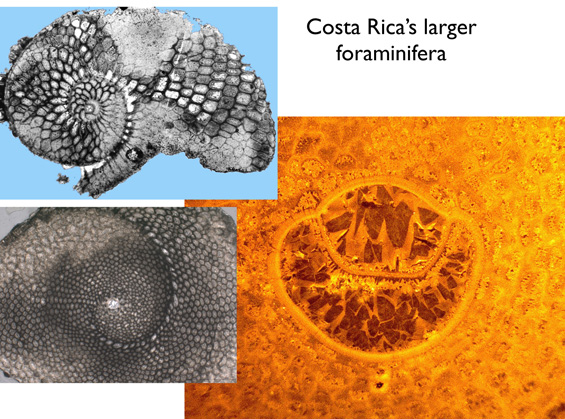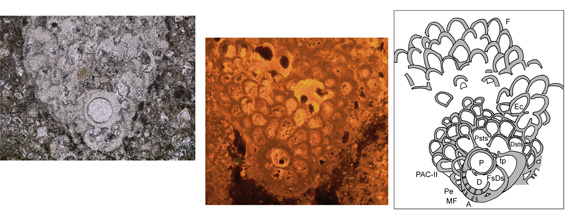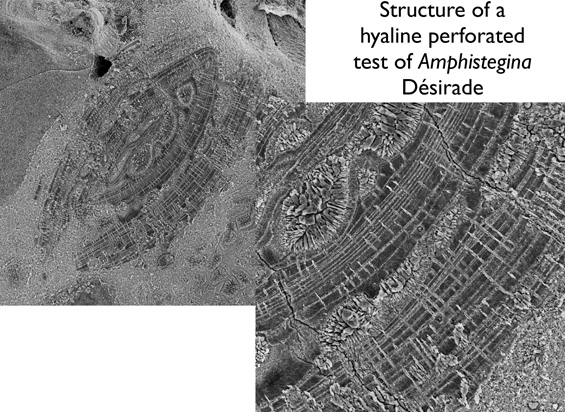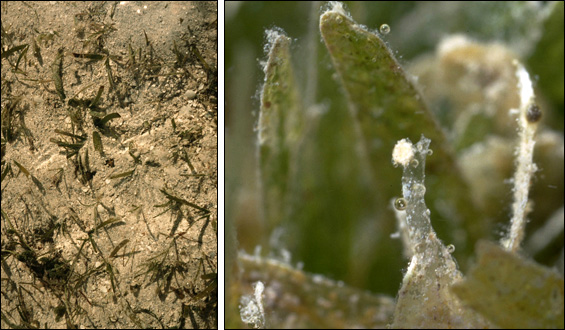The last published biozonation of Caribbean Larger Foraminifera dates back to more than 25 years ago. The systematics of this group needs to be clarified, in order to be more widely used in biochronologic dating. Many of the age calls published were often based on hypothetical lithostratigraphic correlations. In a tectonically active area such as Central America and the Caribbean it is difficult to find long stratigraphic series that would produce good superpositional data to establish stratigraphic relationships.
My approach for the complete revision of the biozonation of this group includes 4 steps:
1. Select and clearly define a number of taxa that cover the Paleocene to Miocene time interval, to be used in biochronology
2. Collect data from Caribbean and Central American localities that provide successions of assemblages.
3. Use the concept of Unitary Associations to calculate a biochronologic framework.
4. Calibrate the obtained biochronozones by means of other associated fossils, such as planktonic Foraminifera, and by means of Sr-isotope data.

Paleo-environments of Cretaceous and Tertiary carbonate banks, platforms and their resediments on active margins (Costa Rica, Panama, Caribbean).
Southern Central America and the Greater Antilles are formed by a collage of oceanic and arc-derived terranes that were accreted to what is now the Caribbean Plate. In this context, carbonate palaeo-environments were short-lived and formed either on volcanic edifices (seamounts and island arcs) or on terranes uplifted into the photic zone by collisional tectonics. Paleontologic dating and the reconstruction of palaeoenvironments is crucial to the understanding of the geodynamic history of the Caribbean Plate.
Methods
I use Catholuminescence and the SEM techniques combined with classical light microscopy to unravel the microstructure of Foraminifera and their diagenesis.
Biogenic carbonates from active margin settings are in general very recrystallized due to different phases of diagenesis including burrial in accretionary prisms and at last tropical weathering.
I use stable isotope geochemistry to establish carbonate palaeoenvironments (C, O), and to determine absolute model ages by means of Sr-isotopes.


Work in progress
We are implementing an illustrated catalogue of Caribbean Larger Foraminifera based on samples from Costa Rica, Panama, Trinidad, Carriacou, Barbados, Puerto Rico, and Florida. A biochronology of these occurrences has been established using Unitary Associations, resulting in a biozonation that spans the Paleocene – Miocene time interval.
The principal fields of the database of species and genera are: taxon name(s), author(s), synonymy, original description, updated description, remarks, stratigraphic range, (palaeo)geographic distribution , occurrences selected for biochronology and the species associated to each taxon in observed assemblages.
Once the database is cleaned up it will be published.
Future work
My future work will include research towards the understandung of the processes of biomineralisation, organic decay and early diagenesis in Larger Foraminifera that will lead to a better use of these biominerals as environmental archives.

